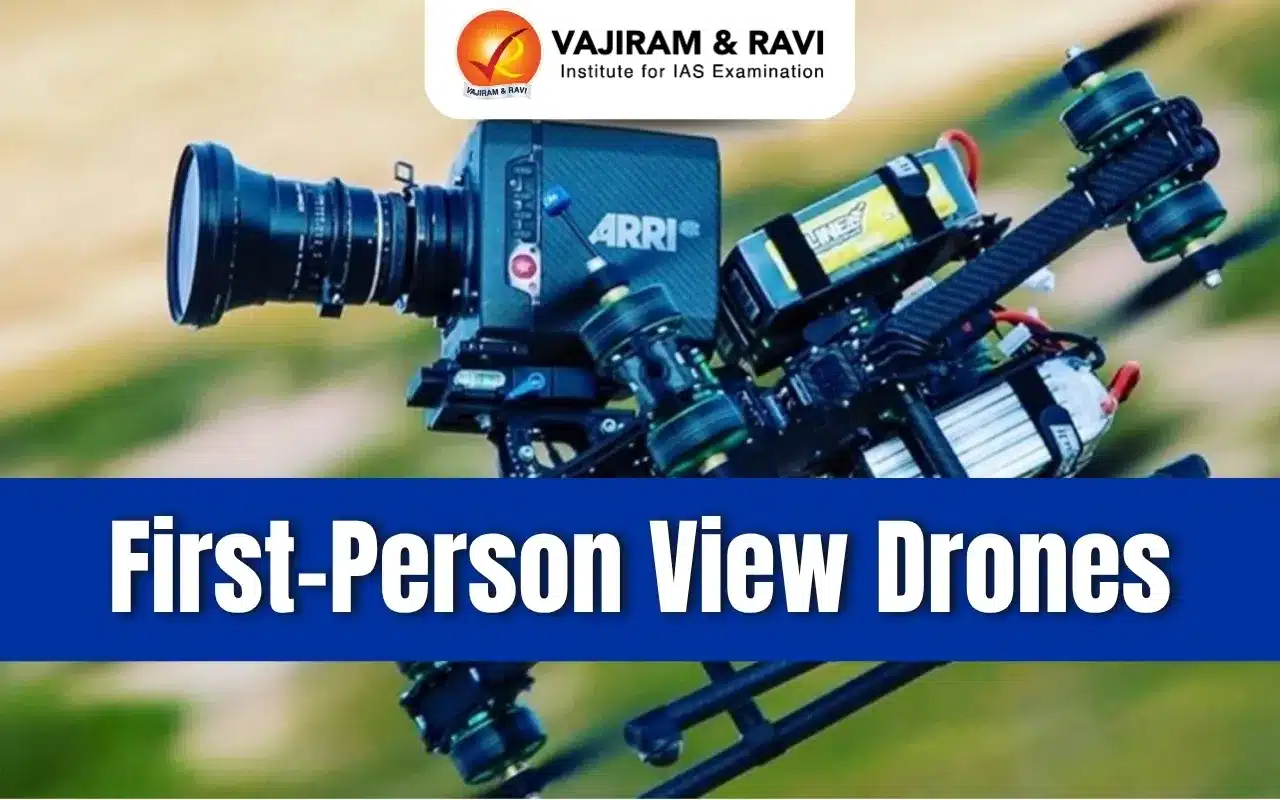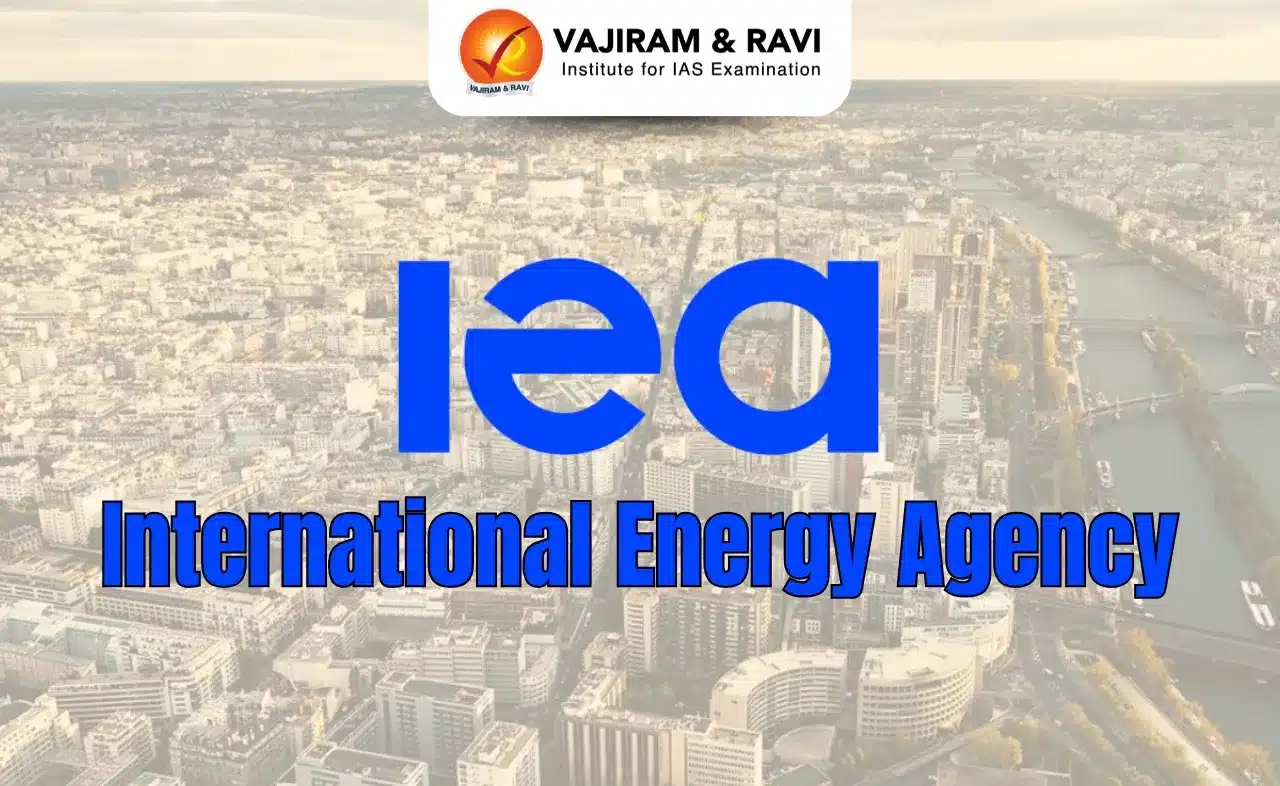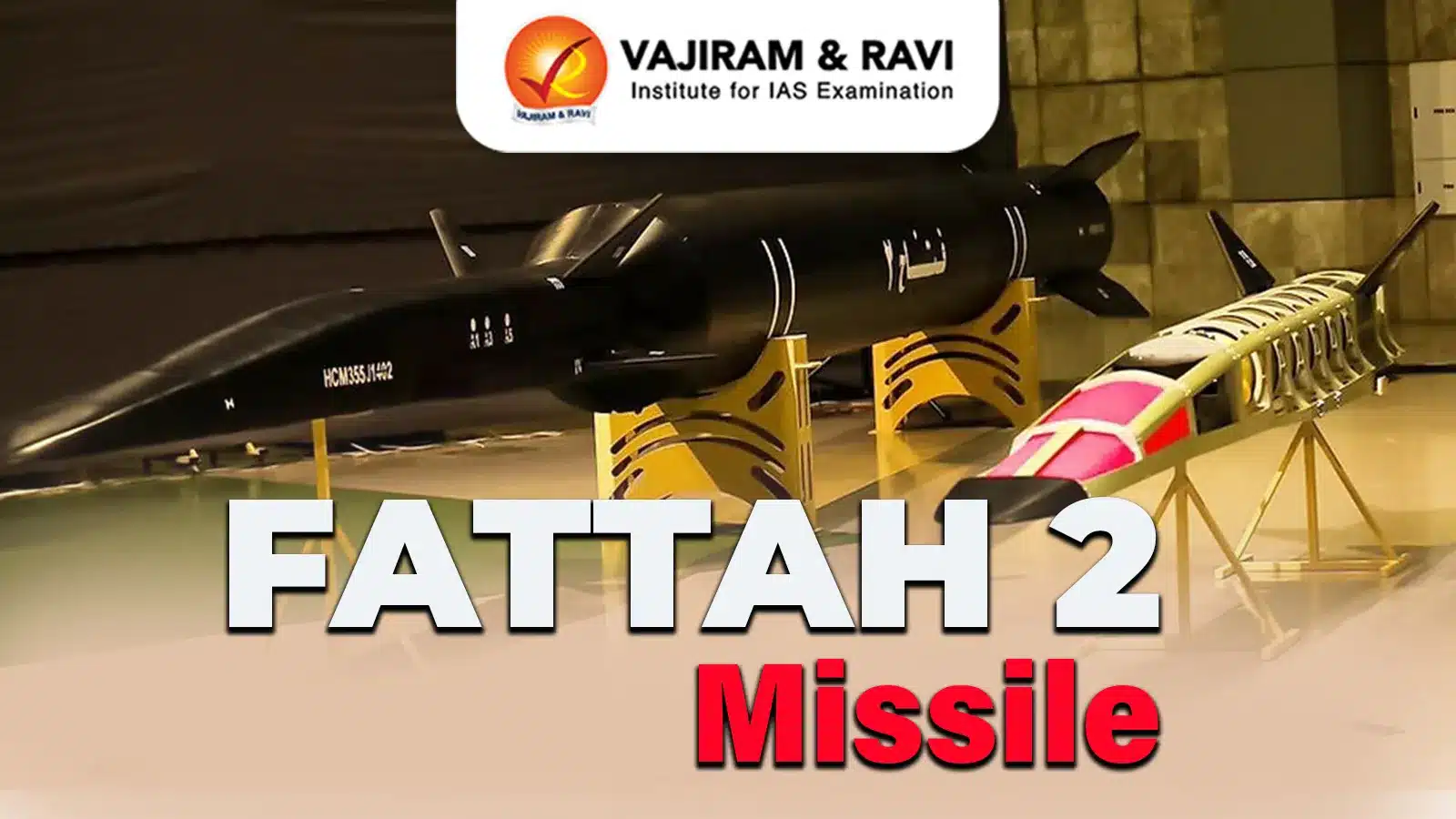First-Person View Drones Latest News
Recently, Ukraine used First-person view drones to attack Russia and destroyed more than 40 planes.
About First-Person View Drones
- These drones are unmanned aerial vehicles enhanced with artificial intelligence to perform advanced tasks with greater precision and autonomy.
- By processing real-time video data through AI algorithms, FPV drones are able to avoid obstacles, and carry out mission-specific operations such as surveillance and search and rescue.
- First-person view (FPV) means that a person piloting a drone can see what the drone sees, through a camera attached to its body.
- The live video can be seen through specialised goggles, or on smartphones and other kinds of screens, and the drone can be manoeuvred remotely.
- Before FPV drones are deployed, a reconnaissance drone with a larger range first goes to survey the area and zero in on a specific region that needs to be targeted.
- FPV drones have a much smaller range, of a few kilometres.
- Advantage: The key advantages are cost and deep strike capabilities while remaining largely undetected.
- Challenge: One major challenge is that the drones’ movement through their surroundings cannot be seen by the drone operator.
- This can limit situational awareness and may lead to disorientation. At times, another person, a visual observer, may be needed to guide the person controlling the drone.
- Uses: Such drones are also used in filming and other non-defence purposes.
Features of First-Person View Drones
- GPS-independent navigation: Operates without relying on satellite-based GPS, enhancing resilience against jamming or signal loss.
- SmartPilot system: Utilises advanced visual-inertial navigation, interpreting camera data to determine position and movement.
- LiDAR technology: LiDAR technology complements the SmartPilot system, boosting precision in complex or cluttered environments.
First-Person View Drones FAQs
Q1: What is a nano drone?
Ans: A nano drone is a type of unmanned aerial vehicle (UAV) that typically weighs less than 250 grams and measures less than 20 centimeters in size.
Q2: What is a drone used for?
Ans: Drones now have many functions, ranging from monitoring climate change to carrying out search operations after natural disasters, photography, filming, and delivering goods.
Source: IE
Last updated on June, 2025
→ UPSC Notification 2025 was released on 22nd January 2025.
→ UPSC Prelims Result 2025 is out now for the CSE held on 25 May 2025.
→ UPSC Prelims Question Paper 2025 and Unofficial Prelims Answer Key 2025 are available now.
→ UPSC Calendar 2026 is released on 15th May, 2025.
→ The UPSC Vacancy 2025 were released 1129, out of which 979 were for UPSC CSE and remaining 150 are for UPSC IFoS.
→ UPSC Mains 2025 will be conducted on 22nd August 2025.
→ UPSC Prelims 2026 will be conducted on 24th May, 2026 & UPSC Mains 2026 will be conducted on 21st August 2026.
→ The UPSC Selection Process is of 3 stages-Prelims, Mains and Interview.
→ UPSC Result 2024 is released with latest UPSC Marksheet 2024. Check Now!
→ UPSC Toppers List 2024 is released now. Shakti Dubey is UPSC AIR 1 2024 Topper.
→ Also check Best IAS Coaching in Delhi
Tags: first-person view drones Prelims Pointers upsc current affairs upsc prelims current affairs
























